WA Wheatbelt & Goldfields Tour - 2016 - 2017
The day started off with bright sunshine and the noise of grey nomad campers getting up and making breakfast, before packing up and moving on. We got ourselves sorted and then went on a drive around a tourist route that encircled Mt Magnet, and covered some of the original gold mine sites. The first stop was "The Granites" an aboriginal sacred site. It was around low rise granite rocks that formed small amphitheaters used to teach children or have coming of age ceremonies.
The next stop on the route was an abandoned town site called
Tracy McPhee
13 chapters
15 Apr 2020
Mt Magnet to Leonora
September 25, 2017
The day started off with bright sunshine and the noise of grey nomad campers getting up and making breakfast, before packing up and moving on. We got ourselves sorted and then went on a drive around a tourist route that encircled Mt Magnet, and covered some of the original gold mine sites. The first stop was "The Granites" an aboriginal sacred site. It was around low rise granite rocks that formed small amphitheaters used to teach children or have coming of age ceremonies.
The next stop on the route was an abandoned town site called


Lennonville. It was a very poignant reminder of the transient nature of the mining settlements. There is nothing left but a railway siding and a few bits of concrete from a bank. The town went from zero to 3,000 souls in about 2 years and then reverted to zero again, all in the space of ten years. The main driver of interest was shallow seams of gold that were easy to get by pick and shovel but once mined out resulted in instant closure of the mine sites. The early miners just dug gold straight out of the top soil, and only later did they start crushing and finally dig down into hard crystalised rock.
As part of the circle route we went to see the town cemetery. It was very sad as you saw that the majority of deaths were of infants and due to simple things like thirst, dysentery, coughs, measles etc. We passed places where the bodies were buried where they fell. This contrasted with some miners who became instant millionaires due to
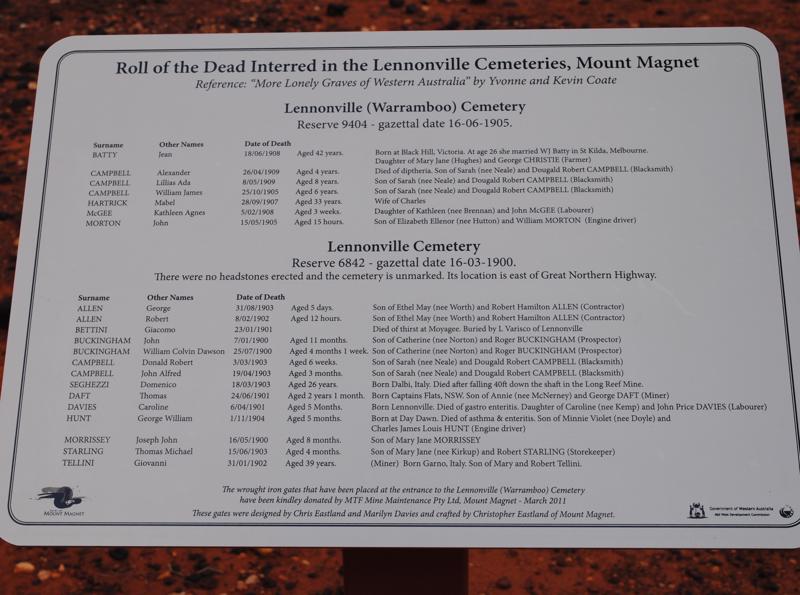
finding a good gold seam. However, how many of them retained the wealth, and did not spend it in the local tavern is unknown.
The last stop was to oversee a modern mine and the scale of the effort is clear. A large pit with man-made hills of rubble and waste rock was very visible along with the "Do not Enter" and "Keep out" signs. Many of these mines are worked by junior exploration companies and they rely on being able to use modern or cost effective solutions to work low grade ore, or deep veined seams that others have passed on. They can also make large profits and then go spectacularly bust. Gambling and gold mining seem to go well together.
Once back in Mt Magnet, we then took the east road to Sandstone. Its a long straight road and with the exception of minor mine sites
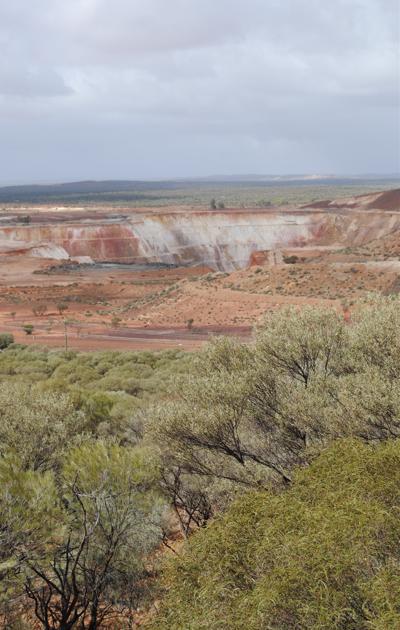
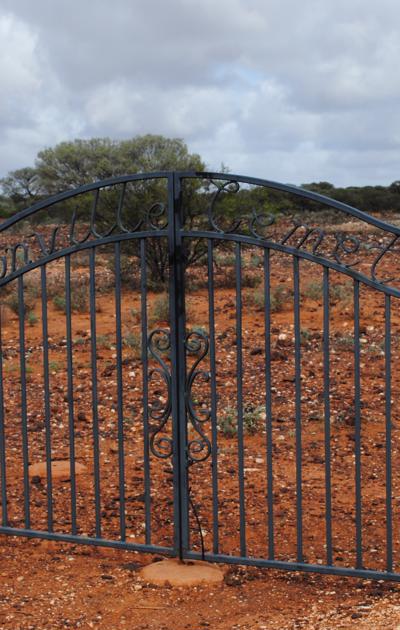

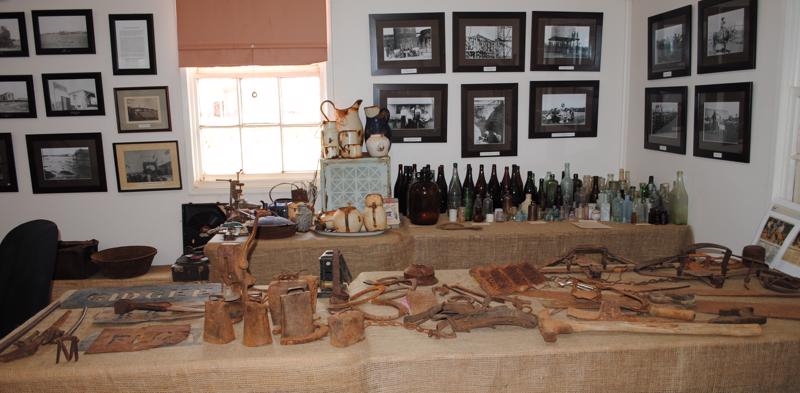
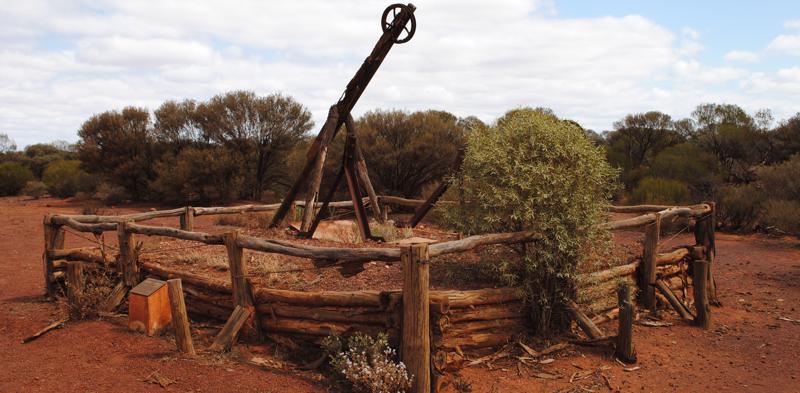
long since abandoned has nothing to see, but open spaces. We arrived in the small township of Sandstone before lunch and decided to stop at the one café. It was a real find and revelation. It was decorated with old bottles and historical artifacts and was run by a hard nosed but friendly woman. She was talkative and she gave us a bit of the history of the place. They have a great community group and the town is really tidy and clean, and has a caravan park, hotel, café and post office and not much else. It has a very nice and beautifully gardened center, and one can see that spending time here would be relaxing and calming. There we no louts hanging around and crime is so low there is not even a police man.
We befriended the other café patrons, an elderly couple and asked them to join our table. This inviting of strangers is a habit Joe seems to enjoy and leads to a quizzical raised eyebrow by Tracy, who then dives into conversation with whomever we ensnare. They enthralled
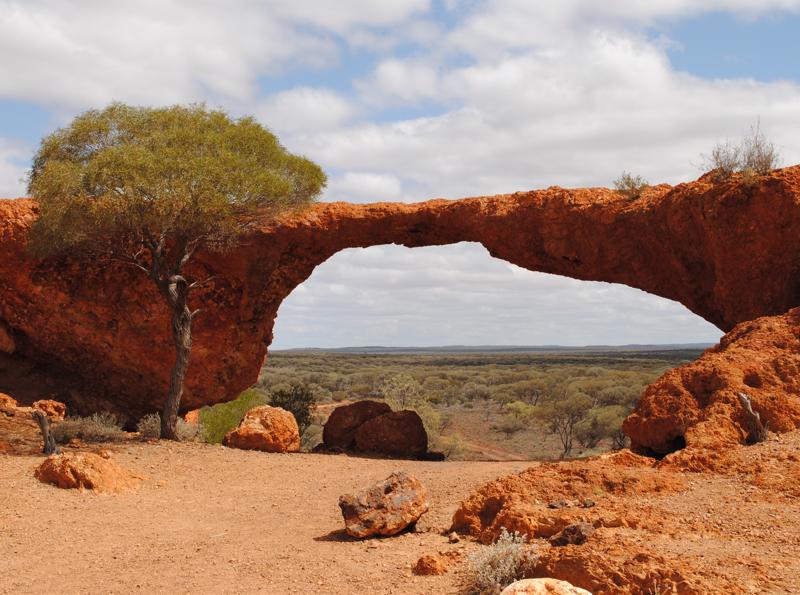
us with a local murder story that made headlines across the country and as the lady had been born in the area we got a feel of what it was like to grow up in a small town in 1960's outback Australia. Certainly a simpler and quieter existence, but full of community and events to look forward to. We ordered some cake for Joe and a large slice of pavlova for Tracy, and we both can say with confidence that it was the best darn treat we have had in months. After another look around town (10mins max to drive form one side to the other!) we reluctantly headed east to Leinster.
Heading out of Sandstone we stopped in at a natural shaped 'london bridge'. A stunning red rock structure that is shaped like london bridge. Despite the warnings signs, Joe clambered up close to the top of the rock to admire the surrounding view. A truly spectacular structure.
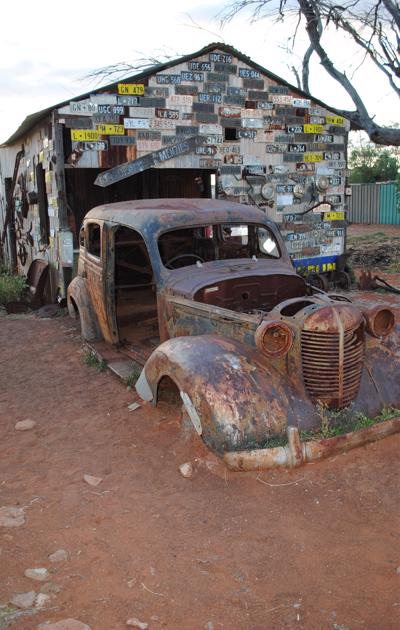
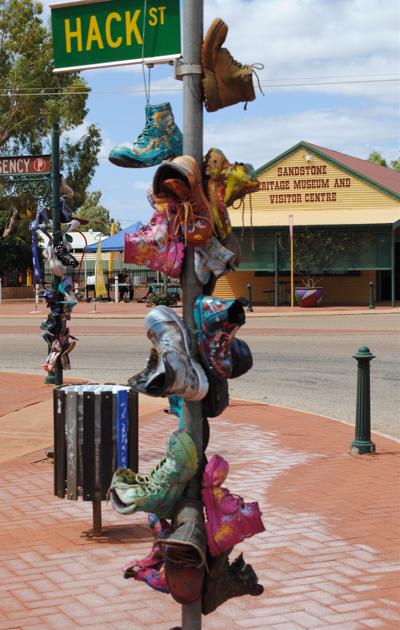
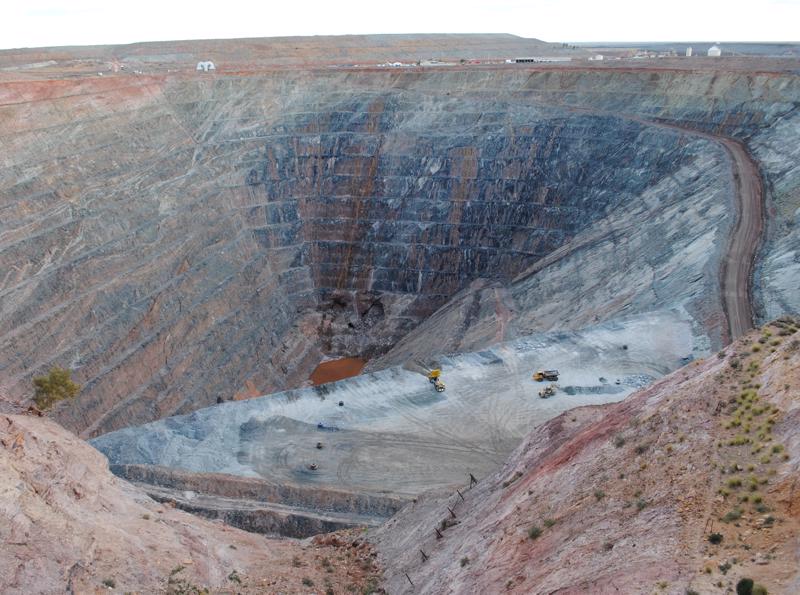

The road is again flat and open and we stopped for a sandwich lunch in the shade of a tree on one of the main break spots. One or two cars went by, but as usual we had the place to ourselves. After another long straight road we arrived in Leinster ,and it was as expected - not much to see. Its a mining town for BHP so is not really interested in visitors. We got some fuel as its always best to stock up when one can, and we then headed south having reached our furthest easterly point of the trip.
The road south was full of mining towns and with dusk arriving we decided to camp in Leonora. This was a good choice as the town has a lot to see. Its got a long main street and must have been impressive in its heyday. We quickly put up the tent and then went to see the old Sons of Gwalia gold mine village that was abandoned as it stood. It has the original houses and their contents and everything form the beds to cooking utensils are on display as you roam in and out of the houses.
President Hoover of the USA worked here and the glamour, excitement and riches of the Western Australian goldfields in the 1890s attracted people from all over the world. Some came in search of fortunes, others because they had expertise to offer the emerging gold mining industry. Herbert Hoover, was just 23 when he
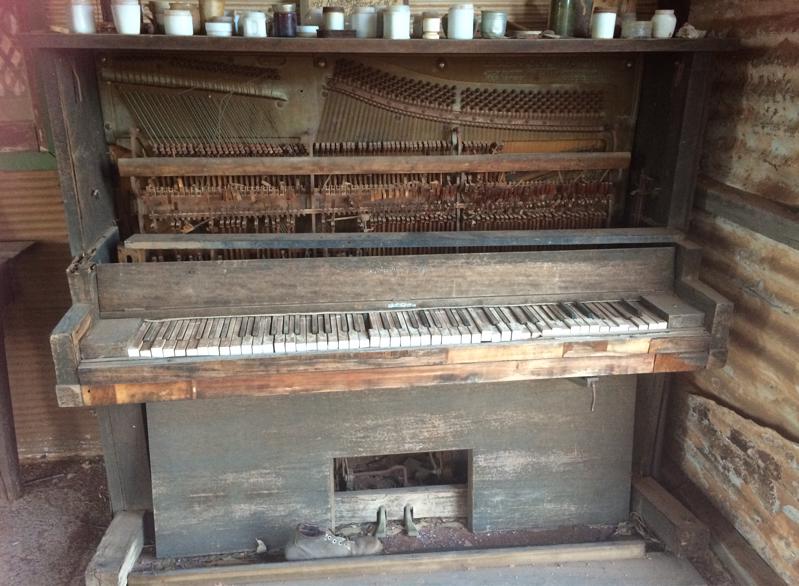
arrived here to take up a post as mining engineer. He fast established a reputation as an astute and exceptionally talented “doctor of sick mines”. He experienced the harshness of the Australian outback, and describing the region as a land of “black flies, red dust, and white heat.”
Hoover was the manager of the gold mine and was responsible for the unusual inclined shaft of the mine. While the deep level mines on the ‘Golden Mile’ at Kalgoorlie had vertical shafts, the shaft at Gwalia went into the earth at an angle of about 30 degrees, following the gold lode for more than 1,600 meters.
It was amazing to see how simple and primitive life was, but people made a good living here. The miners got 7 pounds a week and spend 5 on bed and board and the rest was theirs to spend, drink or save.
We went back into town and had a Tracy special camp dinner. This for those who have never tasted it, is a pasta based mixture in which one adds beans, peas, ham and whatever else is moving around the kitchen. The final results is delicious and I will challenge anyone who is hungry after a good days touring not to enjoy this mixture of ingredients.
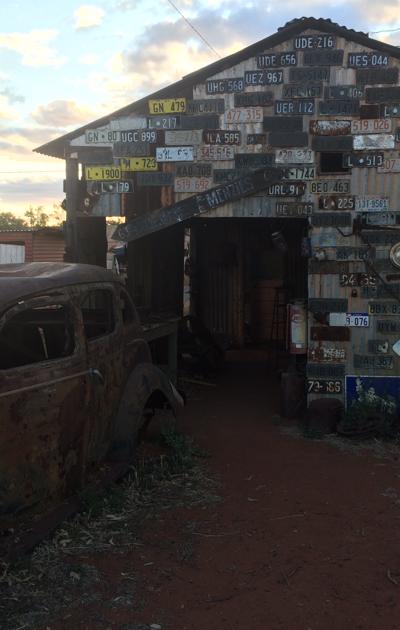
We then got talking to the other campers and Joe got into deep discussions with an ex mining guy who was a mountain of information. He imparted information on the use of rock radiation to heat water, the crystalisation of ore bodies, the rate of mine output, the economics of mining, the age of rocks etc. This was all relayed in a clear teaching voice manner and there was not much this guy did not know about mining or the area. A real treat in education.
We also talked to one of the guys who was a professional prospector for six months of the year and then worked another job back in Victoria for the summer. He would head out each day to the bush to find gold nuggets with his metal detector. He made enough to cover his costs and lives in hope that he will one day hit it big. Prospectors are eternal optimists.
We then headed into town where we quickly decided to drink at the mountain pub instead of the other hotel/pub which seemed to have a much rougher and more localised crowd. The pub was full of miners in for a night of solid food, cold beers and time spend staring at the skimpy dressed bar maid. An Aussie tradition is that on some nights the bar maids will dress in a bikini (called a Skimpy) and give the boys something to stare at. However, out in the wilds it can be a quality hit and miss event, but in general there was no complaints from the boys as they poured beers down dry throats.The food at these bars is all the same, solid tasting simple ingredients and always piled high. Think steak and chips, pies and chips, stew and chips and pasta and chips.
We headed back to the caravan park where everyone was sleeping except two guys at the camp kitchen table discussing God, Jesus and the state of world religions. In a town like this I think they are going to have their work cut out to convert souls to the light.
1.
Introduction
2.
Perth to Burra Rocks via Wyalkatchem & Kalgoorlie
3.
Burra Rocks to Dumbleyoung
4.
Dumbleyung to Quairading
5.
Quairading to Home
6.
Perth to Dalwallinu
7.
Dalwallinu to Yalgoo
8.
Yalgoo to Morowa
9.
Morawa to Perth
10.
The Gold fields Perth to Mt Magnet
11.
Mt Magnet to Leonora
12.
Leonora to Westonia
13.
Westonia to Perth
Share your travel adventures like this!
Create your own travel blog in one step
Share with friends and family to follow your journey
Easy set up, no technical knowledge needed and unlimited storage!